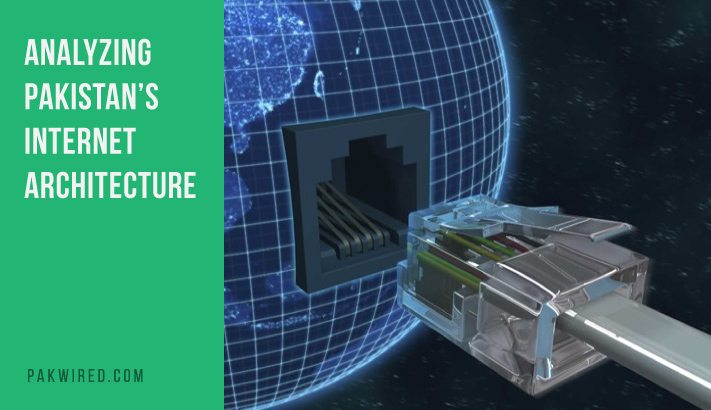Compared to other countries, Pakistan has a very ambiguous Internet architecture. Prominent among such ambiguities is the fact that a vast majority of the country’s Internet routes through one single carrier, the state-owned Pakistan Telecommunication Corporation Limited (PTCL) in Karachi via upstream Internet Service Providers (ISPs) in several cities. There 3 main regional upstream ISPs are situated in Karachi, Lahore and Islamabad.
Hence, by and large, private telecom operators and ISPs are forced to rely on PTCL’s infrastructure to get their share of Internet bandwidth. This leads to a serious question: What would happen if PTCL was to suffer a crippling attack? Would Pakistan get globally disconnected?
Unfortunately, it appears so.
At present, there are 4 operational international undersea (submarine) Internet cables landing in Pakistan:
- SEA-ME-WE-3: A 39,000 km cable starting from Sesimbra, Portugal in the West to Keoje in South Korea. PTCL is among its owners.
- SEA-ME-WE-4: A 20,000 km cable starting from Marseille, France in the West to Melaka, Malaysia in the East. PTCL is among its owners.
- IMEWE: A 12,091 km cable starting from Marseille, France in the West to Mumbai, India in the East. PTCL is among its owners.
- Transworld (TWA-1): A 1,300 km cable which connects Fujairah in the West, Al Seeb in Oman and lands at Karachi, Pakistan in the East. PTCL is not among its owners.
As we can see, PTCL has no ownership of TWA-1.
Apart from the above-mentioned functioning cables, there are 4 upcoming Internet cables which are expected to land in Pakistan also:
- Asia-Africa-Europe-1 (AAE-1): A 25,000 km cable running from Marseille, France in the West to Cape D’Aguilar, China in the East. PTCL is among its owners. It is expected to be operation in the fourth quarter of this year.
- Silk Route Gateway (SRG-1): Length unknown. It will connect Barka, Oman in the West to Karachi, Pakistan in the east with an additional (central) landing site (for the first time) at Gwadar, Pakistan. PTCL is not among its owners. In fact, it is jointly-owned by Omantel (owners of Worldcall) and Multinet Pakistan (Pvt) Ltd. It is expected to be operational in the first quarter of 2017.
- China-Pak Fiber Optic Cable: The high-speed Internet cable was planned for layout over a distance of almost 800 km by Huawei from near Khunjerab to Rawalpindi. It was expected to be complete by end of 2015 but its current status remains unknown.
- SEA-ME-WE-5: A proposed 20,000 km cable starting from Toulon, France in the West to Melaka, Malaysia in the East which will be owned by TransWorld Associates (Pvt) Ltd in Pakistan (not PTCL). It is expected to be operational by November this year.
Following are some of the Internet connectivity issues which Pakistan faced between 2010-2015 (5-year period):
2010
None
2011
None
2012
- On May 10, Internet users across Pakistan faced speed issues because of a fault in the SEA-ME-4 cable. Traffic was being shifted to SEA-ME-WE-3 and IMEWE cables to make up for lost bandwidth.
2013
- On March 27, nearly 50% of Pakistan’s Internet traffic faced disruption when the SEA-ME-WE-4 cable got cut once again. IMEWE cable was also cut.
2014
- On September 27, a fire broke out at the PTCL office in Lahore which damaged 50,000 telephone lines and 25,000 Internet connections in several parts of Pakistan.
2015
- On June 25, Internet traffic across Pakistan was severely affected because of yet another fault in the SEA-ME-WE-4 cable.
- Internet services, phone lines and electricity faced outage across several parts of Pakistan as a strong earthquake measuring 7.5 on the Richter scale rattled Afghanistan and Pakistan.
Pakistan faced a total of 5 major Internet downtime issues across the country, primarily because of the SEA-ME-WE-4 cable which incurred frequent damages.
To add to the headache, Pakistan is unfortunately among those few countries which do not have dedicated Internet Exchange Points (IXPs). Our neighbor India has 7 IXPs in Mumbai, Delhi, Chennai, Kolkata, Bangalore, Hyderabad and Ahmedabad. What is even more embarrassing for us is that despite being a nuclear-armed “developing” country, we fare even worse than African countries of Namibia, Burundi, Swaziland, Gambia, Gabon and Seychelles which established IXPs last year.
The question is, when will Pakistan get proper IXPs? It was reported that Internet Society, the forum which trained African Union member countries to set up their respective IXPs, was training PTA staff to set up Pakistan’s first true IXP in Islamabad anytime this month (January 2016). We are yet to see formal reports by the Ministry of IT & Telecom to verify these online reports and clarify the long-hanging confusions.
Until then, Pakistan will continue to rely on borrowing expensive Internet bandwidth at the cost of speed and reliability.



